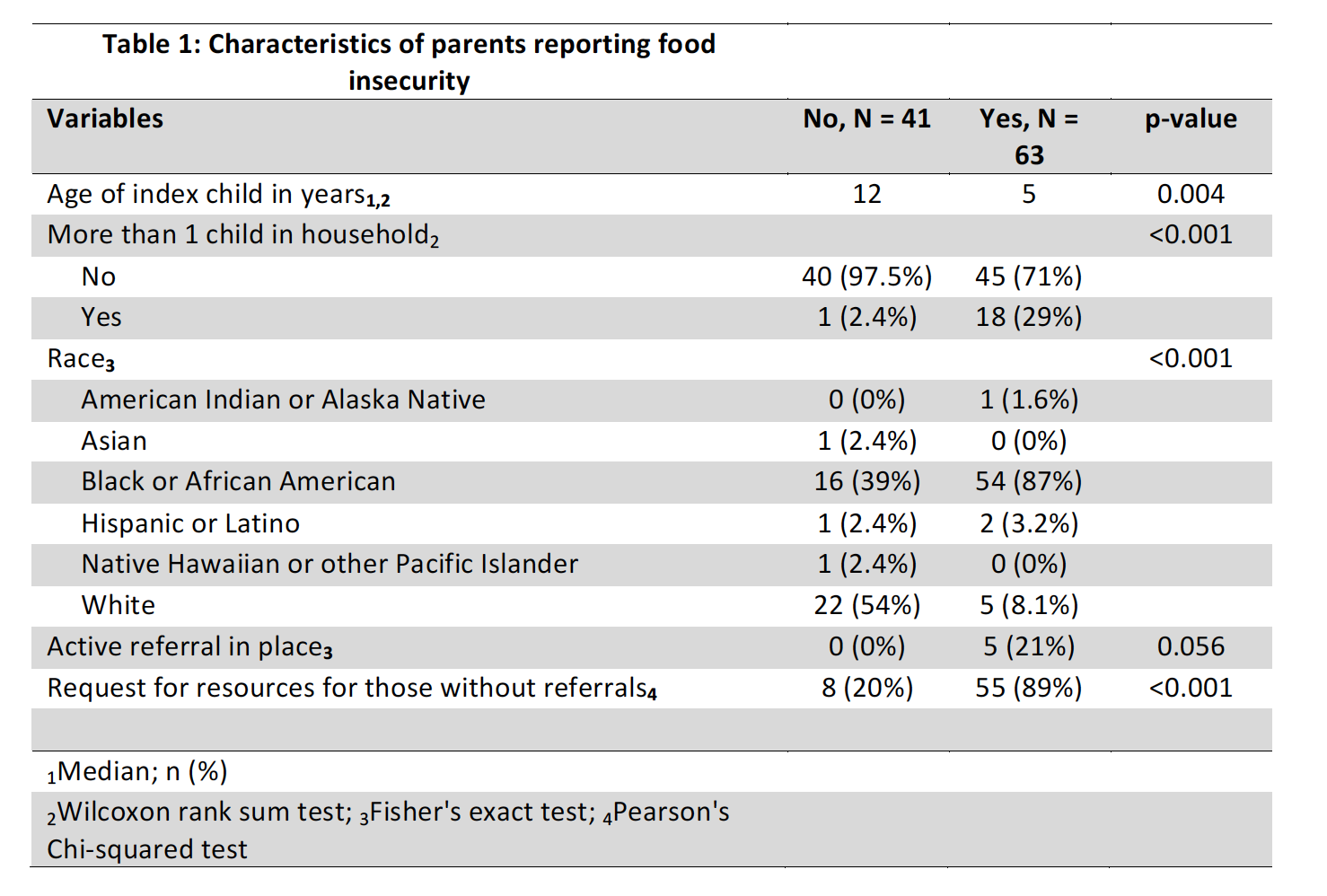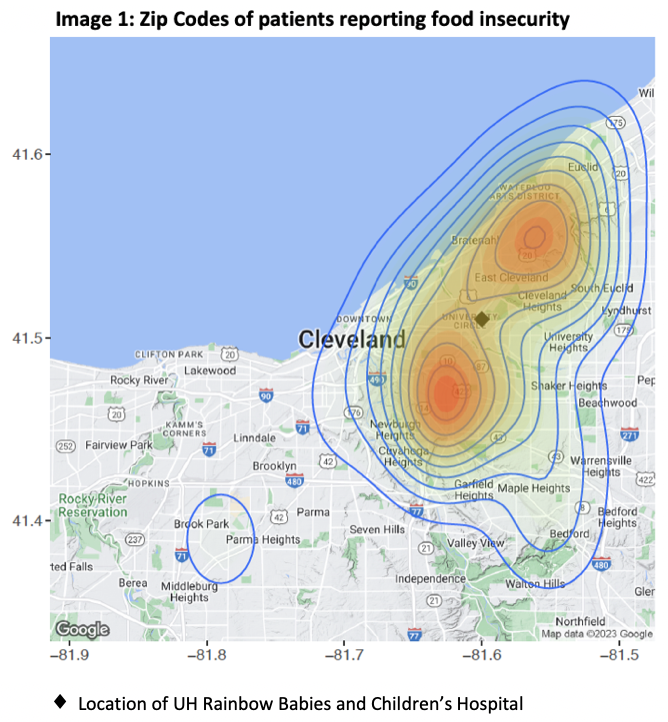Health Equity/Social Determinants of Health
Session: Health Equity/Social Determinants of Health 8
320 - Screening and Referral for Food Insecurity in a Pediatric Emergency Department: A Retrospective Pilot Study
Sunday, May 5, 2024
3:30 PM - 6:00 PM ET
Poster Number: 320
Publication Number: 320.2141
Publication Number: 320.2141

Emma Strode, DO (she/her/hers)
Resident Physician
UH Rainbow Babies & Children's Hospital
Cleveland, Ohio, United States
Presenting Author(s)
Background: At our urban Children’s Hospital, 37% of families in our primary care offices report food insecurity (FI). Patients screening positive for FI are referred to an internal hospital program providing a monthly prescription for food at an in-hospital food pharmacy. FI for families is dynamic and may not always be captured at outpatient visits. Screening for FI in pediatric emergency departments (PED) may identify families in need of aid who might be missed.
Objective: The aim of this study was to determine whether screening for FI via an innovative electronic QR code would be acceptable and feasible to those presenting to the PED.
Design/Methods: A descriptive study of parents of patients visiting our PED from 03/1/2022 through 12/9/2022 was completed. Parents were provided a QR code by pediatric residents. Parents independently reviewed the study information and if consented to participate, completed an 11-item survey that included household demographics, the 2 question Hunger Vital SignTM, and current referral status for our in-hospital food pharmacy. Those who screened positive were asked if they want a referral placed to the food pharmacy. Secondary to limited sample size, non-parametric statistics were used.
Results: 104 families completed the survey with 63 families reporting FI (61%). Black parents reported a higher rate of FI (n=70, 87%) as compared to White parents (n=27, 8.1%). Of those families screening positive for FI, their household was more likely to have children under the age of 5, p-value = 0.004. Additionally, those that had FI were more likely to have multiple children versus one child, p-value < 0.001. Access to the food pharmacy was geographically feasible for the majority of families reporting FI who lived in 2 zip codes near the hospital (image 1). Of patients who screened positive for FI without acknowledging a previous referral, 55 (89%) requested resources, p-value < 0.001 (table 1).
Conclusion(s): In this preliminary study, using a novel electronic QR code, screening was successfully completed. This allowed parents to self-report the survey. FI was more common than expected based on rates from primary care settings in our hospital. Many of these families are not aware of currently available in-hospital resources for FI, but interest in such referrals was high. It is important to implement screening methods aimed at identifying FI in patients in all healthcare settings to ensure they receive needed resources.


